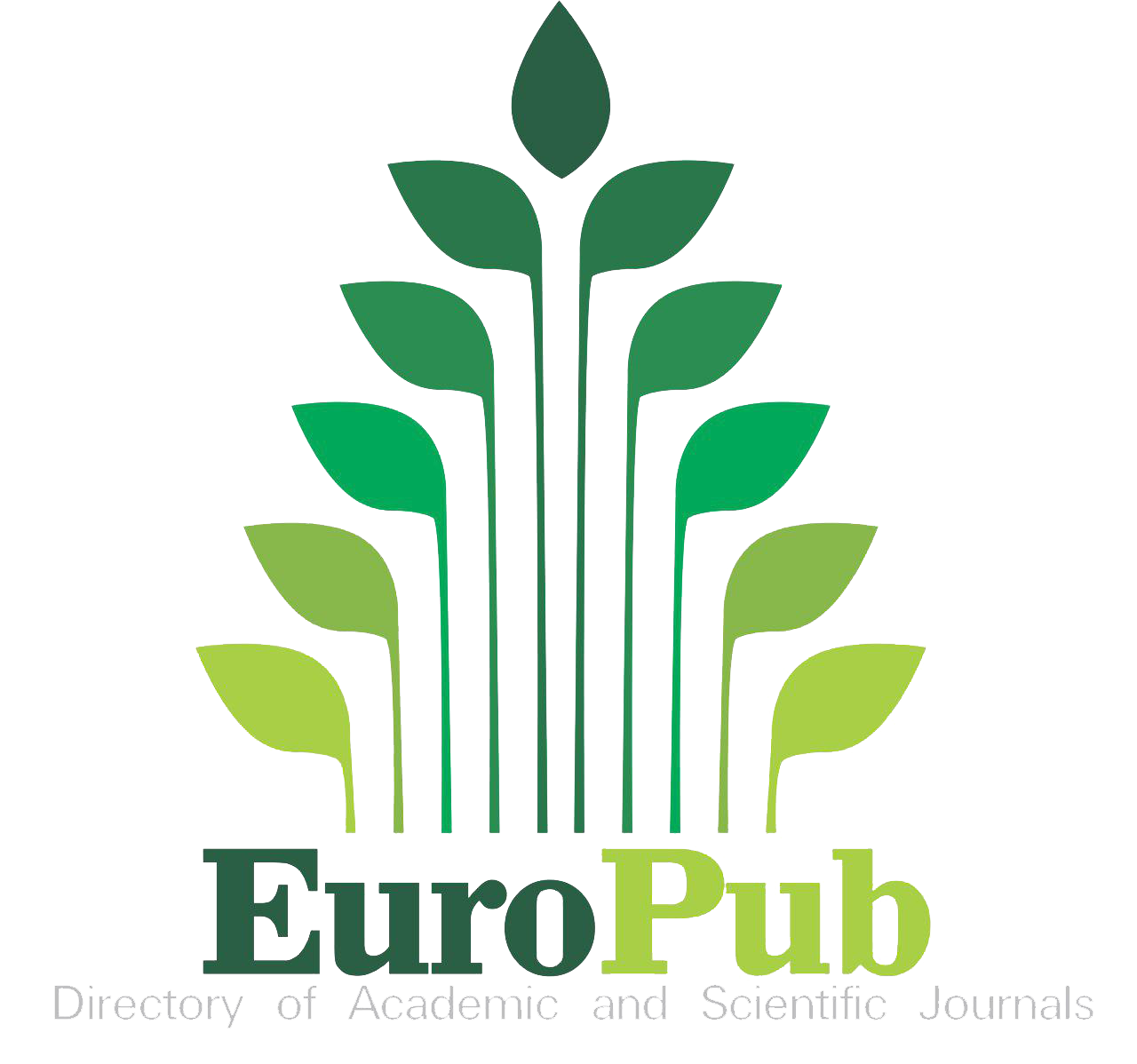The Synesthetic Language of Picasso: Exploring Emotions and Sensations in His Art
DOI:
https://doi.org/10.54536/ajmri.v3i4.3236Keywords:
Pablo Picasso, Synesthesia, Neuroaesthetics, Multidisciplinary, Cross-Modal Association, Art History AnalysisAbstract
This review article adopts an interdisciplinary approach in analyzing Picasso’s synesthetic experiences and a transformative glaze on his artwork. It integrates and analyses the methods from different disciplines through Art Historical Analysis. It explores Picasso’s paintings in various phases and investigates possible synesthetic perception by observing patterns of colors, forms, and compositions. Neuroscientific Approaches are incorporated to explain how the sensory input of the receiver could have triggered a cross-modal effect in Picasso’s work by exploring the concepts of synesthesia. Psychological interpretation explores the psychological theory of feeling and investigates how Picasso’s feeling processes are associated with synesthetic feeling and his creative decision-making processes. This article includes a literature review that explains the purpose of positioning Picasso’s synesthetic artwork in the broader context of synesthesia and the theories of art. Due to this kind of multidisciplinary approach adopted in work, the richness of Picasso’s synesthetic imagination can be examined more profoundly, and the interactions between experience, feeling, or even mood of the artist with their art can be reconstructed in detail. In this context, synthesizing findings from the multi-disciplinary literature, this paper offers a novel insight into Picasso’s synesthetic imagination and a holistic understanding of artistic innovation.
Downloads
References
Adiletta, M. J., & Thomas, O. (2020). An artistic visualization of music modeling a synesthetic experience. arXiv preprint arXiv:2012.08034.
Atkin, W. (2021). Historical Dictionary of Surrealism. Rowman & Littlefield.
Bakovic, M., Karapandza, S., Mcheik, S., & Pejović-Milić, A. (2022). Scientific Study of the Origin of the Painting from the Early 20th Century Leads to Pablo Picasso. Heritage, 5(2), 1120-1140.
Benítez-Burraco, A., Adornetti, I., Ferretti, F., & Progovac, L. (2023). An evolutionary account of impairment of self in cognitive disorders. Cognitive Processing, 24(1), 107-127.
Blum, H. P. (2021). Picasso’s prolonged adolescence, his Blue Period, and blind figures. In Art in Psychoanalysis (pp. 39-55). Routledge.
Brang, D., & Ramachandran, V. S. (2020). How do crossmodal correspondences and multisensory processes relate to synesthesia? In Multisensory Perception (pp. 259-281). Elsevier.
Brauer, F. (2023). Vitalist modernism: art, science, energy and creative evolution. Taylor & Francis.
Castro, A. J., Gary, S., Sergeant, M. J. T., & Jones, S. (1999). The human nervous system: Functional anatomy. Essential Psychology, 199.
Chen, I.-H., Zhao, Q., Long, Y., Lu, Q., & Huang, C.-R. (2019). Mandarin Chinese modality exclusivity norms. PloS one, 14(2), e0211336.
Cheng, X., Zhang, H., Zhang, J., Gao, S., Li, S., Huang, Z., Bai, L., Yang, Z., Zheng, X., & Yang, L. (2023). Intelligent multi-modal sensing-communication integration: Synesthesia of machines. IEEE Communications Surveys & Tutorials.
Chernyakevich, B. (2023). Reassessing Gombrich’s Theory of Illusion for the 21st Century. Aalto University.
Cho, J.-D., & Lee, Y. (2021). Colorpoetry: Multi-sensory experience of color with poetry in visual arts appreciation of persons with visual impairment. Electronics, 10(9), 1064.
Cho, J. D. (2021). A study of multi-sensory experience and color recognition in visual arts appreciation of people with visual impairment. Electronics, 10(4), 470.
Cohen, J. I. (2020). The Black Art Renaissance: African Sculpture and Modernism across Continents. University of California Press.
Conti, C. A. (2023). The Intermediality of Fernando de Rojas’ La Celestina Through Adaptations and Translations From Literature, Cinema, and Art. University of California, Riverside.
Cucci, C., Picollo, M., Stefani, L., & Jiménez, R. (2023). The man who became a Blue Glass. Reflectance hyperspectral imaging discloses a hidden Picasso painting of the Blue period. Journal of Cultural Heritage, 62, 484-492.
Delgado-Lobete, L., Pértega-Díaz, S., Santos-del-Riego, S., & Montes-Montes, R. (2020). Sensory processing patterns in developmental coordination disorder, attention deficit hyperactivity disorder and typical development. Research in Developmental Disabilities, 100, 103608. https://doi.org/10.1016/j.ridd.2020.103608
Duarte, A., & Constantinidi, N. P. (2022). Traces of knowledge and use of cues of sensory processing in ancient Greek art. Arte, Individuo y Sociedad, 34(2), 521-540.
Earl, H. (2020). Virginia Woolf’s Synesthesia. Twentieth Century Literature, 66(4), 463-484.
Ferguson, P. (2023). Open Secrets: Poetry of Nature and Grace. Wipf and Stock Publishers.
Finlay, J. (2023). Encuentros híbridos: Reencuadrando la Suite Volard de Picasso. Revista Eviterna, 14, 51-69.
Fiorillo, F. (2020). Assessment of a best practise approach for the attribution and authentication of paintings.
Florea, E., & Cojocaru, S. (2021). The Presence of the Phenomenon of Artistic Synesthesia in Painting. Review of Artistic Education, 22(1), 244-252.
Franz, E. K. (2023). Facing L’Origine du Monde: The Model’s Role in the Studio Romance. The University of Wisconsin-Madison.
Gage, J., & Grovier, K. (2023). Colour in art. Thames & Hudson.
Gravener, M. (2021). The Neurocognitive Mechanisms of Grapheme-Color Synesthesia.
Güliz, B. (2022). The place of the collage as a way of expression in graphic design. European Journal of Arts, 3-4, 19-27.
Haag, C., & Castillo, L. (2021). What Innovation Can Learn from Avant-garde. ISPIM Conference Proceedings.
Hamada, D., Yamamoto, H., & Saiki, J. (2020). Association between synesthetic colors and sensitivity to physical colors changed by type of synesthetic experience in grapheme-color synesthesia. Consciousness and cognition, 83, 102973.
Igorevna, K.-A. E. (2022). “Haptic Optic” and Non-visual Perception in Art of the 20th and Early 21st Centuries. American Journal of Art and Design, 7(4), 144-149.
Iosifyan, M., Sidoroff-Dorso, A., & Wolfe, J. (2022). Cross-modal associations between paintings and sounds: Effects of embodiment. Perception, 51(12), 871-888.
Jewanski, J., Simner, J., Day, S. A., Rothen, N., & Ward, J. (2020). The evolution of the concept of synesthesia in the nineteenth century as revealed through the history of its name. Journal of the History of the Neurosciences, 29(3), 259-285.
Jozefacka, A., & Mahler, L. (2022). Reading Picasso in Munich and Prague in 1922. Art/Umění, 70(2).
Karim, A., Proulx, M. J., de Sousa, A. A., & Likova, L. T. (2021). Neuroplasticity and crossmodal connectivity in the normal, healthy brain. Psychology & Neuroscience, 14(3), 298.
Kihara, M., Hamada, D., & Nagata, N. (2024). Possible acquired synesthesia underlying the consistency of favorable colors – A case study of grapheme-color synesthesia and sound-color synesthesia among competitive Karuta players. In International Symposium on Affective Science and Engineering ISASE2024.
Klempe, S. H. (2022a). The Experimental Psychology’s Use of Music to Uncover Mental Capabilities. In Sound and Reason: Synesthesia as Metacognition (pp. 53-90). Springer.
Klempe, S. H. (2022). A psychological approach to complexity: Synesthesia. In S. H. Klempe (Ed.), Sound and reason: Synesthesia as metacognition (pp. 127-166). Springer.
Kumar, N. (2020). Parapsychology - Towards causal research. International Journal of Social Impact, 5, ISSN: 2455-670X.
Kwon, J., & Iedema, A. (2022). Body and the senses in spatial experience: The implications of kinesthetic and synesthetic perceptions for design thinking. Frontiers in psychology, 13, 864009.
Laeng, B., Flaaten, C. B., Walle, K. M., Hochkeppler, A., & Specht, K. (2021). “Mickey Mousing” in the Brain: Motion-Sound Synesthesia and the Subcortical Substrate of Audio-Visual Integration. Frontiers in Human Neuroscience, 15, 605166.
Langley, A., Muir, K., & Sutherland, K. (2020). Scenes from the life of Picasso’s Still Life (1922): History, materials, and conservation. SN Applied Sciences, 2(8), 1384.
Lorusso, L., Ione, A., Franchini, A. F., & Porro, A. (2022). Synesthesia and Emotional Sound. In The Musical Neurons (pp. 13-26). Springer.
Mahir’s, P., & Gurcan, A. T. (2023). The effect of music on painting: J. S. Bach’s Fugue form in Paul Klee and Mehmet.
Makioka, S. (2021). Idiosyncratic spatial representations of the days of the week in individuals without synesthesia. Cognition, 207, 104500.
Mallen, E. (2024). Pablo Picasso: In Search of Language. International Journal of Culture and History, 11(1), P17-P17.
MATSUI, H. (2023). Top-down processing in Cubism: The diagram of human proportion in Picasso’s Cubist works. Psychologia, 65(2), 233-253.
McDonnell, M. (2020). Finding Visual Music in Its 20th-Century History. Dublin: Trinity College.
Meier, B. (2021). Synesthesia. In G. F. Koob, M. Le Moal, & R. F. Thompson (Eds.), Encyclopedia of behavioral neuroscience.
Murray, R. (2021). A review of Synesthesia: historical and current perspectives. UWL Journal of Undergraduate Research XXIV.
Nair, A., & Brang, D. (2019). Inducing synesthesia in non-synesthetes: Short-term visual deprivation facilitates auditory-evoked visual percepts. Consciousness and cognition, 70, 70-79.
Narag, M. J. G., & Soriano, M. (2021). Discovering artistic influences of painters from expressionism, impressionism, and surrealism art movements using convolutional neural network. Journal of Cultural Heritage, 51, 182-193.
O’Connor, E. F. (2021). Pamela Colman Smith: Artist, Feminist, and Mystic. Liverpool University Press.
Packard, C. (2023). Art Rules: How Great Artists Think, Create and Work. Frances Lincoln Childrens Books.
Palmqvist, M. (2021). A Palette of my Inner Universe–To Use Synesthesia in Artistic Processes.
Pirinen, M. (2020). Game of the name: titles and titling of visual artworks in theoretical discussions from 1960 to 2015. JYU dissertations.
Pittion, U. Representations of music in nineteenth-century French art.
Poplavskyi, M., Rybinska, Y., & Ponochovna-Rysak, T. (2020). The specific of synesthesia in contemporary American and English poetry and its impact on the reader. Cogito, 12(3).
Ren, H., & Liu, S. (2023). The education of synesthetic interaction design and the aesthetics of engineering and technology. In TENCON 2023-2023 IEEE Region 10 Conference (TENCON).
Robson, J., & Currie, G. (2022). Aesthetics and cognitive science.
Sattari Sarbanqoli, S., & Jamali, S. (2021). A comparative study of painting and architecture stylistics of contemporary Iranian and western arts. Journal of Art and Architecture Studies, 10(2), 31-41.
Simmonds-Moore, C. A., Alvarado, C. S., & Zingrone, N. L. (2019). A survey exploring synesthetic experiences: Exceptional experiences, schizotypy, and psychological well-being. Psychology of Consciousness: Theory, Research, and Practice, 6(1), 99. https://doi.org/10.1037/cns0000177
Sjödin, Å. (2020). The whole is “other” than the sum of its parts: An investigation of synesthesia and perception through a patchwork. In.
Sotiropoulos, M. G., & Anagnostouli, M. (2021). Genes, brain dynamics and art: the genetic underpinnings of creativity in dancing, musicality and visual arts. Journal of Integrative Neuroscience, 20(4), 1095-1104.
Spehar, B., & Stevanov, J. (2021). Expressive qualities of synthetic textures. Psychology of Consciousness: Theory, Research, and Practice, 8(2), 217.
Spiteri, R. (2019). Surrealism, Modernism, Dissensus. Australian and New Zealand Journal of Art, 19(1), 107-122.
Troughton, I. A., & Casanovas, À. P. (2023). Picasso, Schlemmer and beyond: Scenography and costume design from a critical disability studies lens. Studies in Costume & Performance, 8(2), 175-190.
Trufanova, I. V. (2024). Types of Synesthesia in B. Pasternak’s Story “Childhood Luvers”(“Childhood Eyelets”). RUDN Journal of Language Studies, Semiotics and Semantics, 15(1), 126-137.
Van der Schyff, D., Schiavio, A., & Elliott, D. J. (2022). Musical bodies, musical minds: Enactive cognitive science and the meaning of human musicality. MIT Press.
Veerman, J. (2021). Entangled: The Synsesthetic Art Museum.
Wang, M., Loiudice, A., Okatenko, V., Sharp, I. D., & Buonsanti, R. (2023). The spatial distribution of cobalt phthalocyanine and copper nanocubes controls the selectivity towards C2 products in tandem electrocatalytic CO2 reduction. Chemical Science, 14(5), 1097-1104.
Ward, J. (2021). Synaesthesia as a model system for understanding variation in the human mind and brain. Cognitive Neuropsychology, 38(4), 259-278.
Ward, J., & Simner, J. (2020). Synesthesia: The current state of the field. In Multisensory perception (pp. 283-300). Elsevier.
Ward, J., & Simner, J. (2022). How do different types of synesthesia cluster together? Implications for causal mechanisms. Perception, 51(2), 91-113.
Ward, R. J. (2023). Virtual Synaesthesia: Crossmodal Correspondences and Synesthetic Experiences The University of Liverpool (United Kingdom)].
White, R. J. (2019). Kandinsky: Thinking about the Spiritual in Art. Religion and the Arts, 23(1-2), 26-49.
Williams, J. M. (2022). The Synesthesia Suite: The color pieces of Andy Akiho. The University of Memphis.
Yang, S. (2020). Picasso for Preaching: The Demand and Possibility of a Cubist Homiletic. Religions, 11(5), 232.
Young, K. (2021). Synesthetic gestures: making the imaginary perceptible. The Senses and Society, 16(1), 89-101.
Zhao, Q., Ahrens, K., & Huang, C.-R. (2022). Linguistic synesthesia is metaphorical: a lexical-conceptual account. Cognitive Linguistics, 33(3), 553-583.
Downloads
Published
How to Cite
Issue
Section
License
Copyright (c) 2024 Koncha Pinos

This work is licensed under a Creative Commons Attribution 4.0 International License.







